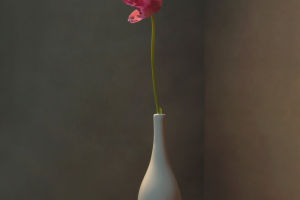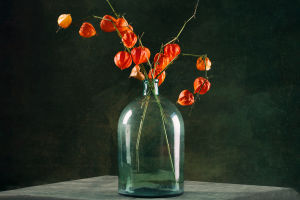Tulips, those elegant and charming flowers, have captured people's hearts since ancient times.
The history of tulips can be traced back to the 16th century when they were widely cultivated.
Soon, their allure spread to Europe, where they became symbols of wealth and royal prestige.
These flowers are celebrated for their beautiful shapes and rich colors. From bright red and yellow to soft pink and white, the hues of tulips are varied, offering endless visual enjoyment. In the world of bouquets, tulips have emerged as a top choice for many occasions due to their unique charm.
In modern floral design, tulip bouquets are increasingly favored for their simple yet elegant style. The straightforward shape of tulips allows them to be paired with various other flowers, creating diverse atmospheres.
For instance, incorporating green leaves such as eucalyptus or ferns can introduce a natural vibe, enhancing the bouquet's liveliness. Additionally, tulips possess long stems, and their naturally drooping flowers evoke a sense of lightness and elegance, making them versatile in floral arrangements.
Creating a bouquet of tulips is not complicated. The key is to choose fresh tulips. When selecting them, pay attention to the color of the petals; bright colors typically indicate healthy flowers. Next, consider adding complementary blooms, such as white roses or small baby’s breath.
These additions can enhance the bouquet's layers and richness. When designing, consider the overall shape—whether round, fan-shaped, or free-form—allowing for adjustments based on personal preferences and the specific occasion.
Beyond their color and shape, the fragrance of tulip bouquets contributes significantly to their charm. Although the scent of tulips is relatively subtle, combining them with aromatic flowers can create a unique olfactory experience.
For example, pairing tulips with fragrant blooms like lilacs or roses can achieve a harmonious balance in both visual appeal and aroma. Such bouquets are suitable not only for everyday decor but also for gifting to loved ones as a gesture of blessings and care.
The symbolism of tulips is equally captivating. In many cultures, tulips represent love, passion, and elegance. Different colors of tulips convey various meanings: red tulips symbolize deep love, while yellow tulips embody happiness and sunshine.
Therefore, when selecting a tulip bouquet, it’s important to choose the right color based on the recipient and the occasion, ensuring that the bouquet conveys the most sincere emotions.
Tulip bouquets are also ideal for special holidays and celebrations. Whether it’s Valentine’s Day, Mother’s Day, or a wedding, tulips can become the highlight of any occasion.
At weddings, many brides opt for tulips as their bouquets—not just for their beauty but also because tulips symbolize the purity and beauty of love. At family gatherings or friends’ birthday parties, a bouquet of colorful tulips can create a warm and inviting atmosphere, uplifting everyone’s spirits.
Finally, the maintenance of tulip bouquets is crucial. To keep the bouquets fresh, it is advisable to cut the flower stems at an angle and place them in clean water, avoiding direct sunlight.
Regularly changing the water and adding fresh flower preservatives can significantly extend the bouquet's longevity. In this way, tulip bouquets can provide beauty during significant moments while also adding a vibrant touch to daily life.
With their unique charm and rich symbolic meanings, tulip bouquets have become a shining jewel in floral design. They are not only suitable for various occasions but also showcase limitless possibilities through different combinations.
Whether used as a gift or for home decoration, tulip bouquets bring warmth and beauty, becoming an essential part of people’s lives.


